Ghost kitchens (also called cloud kitchens or dark kitchens) differ from traditional restaurants in that they prepare food for takeout and delivery only. They take online or phone orders and often work with one or more third-party delivery services. With a ghost kitchen, you can execute multiple brands in the same physical location, offering more […]
Ghost kitchens (also called cloud kitchens or dark kitchens) differ from traditional restaurants in that they prepare food for takeout and delivery only. They take online or phone orders and often work with one or more third-party delivery services. With a ghost kitchen, you can execute multiple brands in the same physical location, offering more revenue opportunities for your business.
While some delivery services like DoorDash provide an iPad for managing orders, ghost kitchens can benefit from a point-of-sale (POS) system that coordinates all orders, tracks ingredients, and manages drivers so you can concentrate on creating great food on schedule. The best cloud kitchen POS systems allow diners and operators to use them easily and transparently.
I considered over a dozen cloud kitchen POS systems for this guide to come up with the six best for ghost kitchens.
| POS system | Monthly fees* | Online transaction fees | Third-party delivery integrations | Contract | Driver management |
| $0–$199 | 1.99% + 25 cents | 100+ | 2 years | Excellent | |
| Visit Rezku | |||||
| $0–$60 | 2.9% + 30 cents | 10+ | None | Good, but lacks driver maps | |
| Visit Square | |||||
| $55–$75 | Varies by processor | 2+ | 1 year | Good, includes customer time estimates | |
| Visit Oracle | |||||
| $29–$69 | Varies by processor | Via GetOrder | None or 1 year | Excellent | |
| Visit Poster | |||||
| $69–$399 | 2.6% + 10 cents | 4+ | None | N/A | |
| Visit Lightspeed | |||||
| $0–$165 | 2.99% + 15 cents | 12+ | None | Excellent | |
| Visit Toast | |||||
*Based on month-to-month rates

Price & payment processing: 3.81/5
Features: 4.5/5
Backend tools: 4.75/5
Ease of use: 5/5
Expert score: 5/5
Rezku offers excellent tools for ghost kitchens, a cash rewards program (that can save you processing fees), loyalty programs and gift cards, and free POS software that contains everything from online ordering to gift cards and a kitchen display system (KDS).
The driver management tools are first-rate, not only with maps but also with route optimization. So, if you’re OK with a contract, Rezku is a great choice. The processing rates are also very competitive and affordable. Beyond this, you have access to hundreds of third-party integrations to ensure you have all the tools you need to successfully operate your ghost kitchen.
It earned 4.56 out of 5 on my rubric. I found it easy to use with a lot of great features, including easy onboarding and employee management, remote smartphone system management, and unlimited data backups.
However, requiring a two-year contract and being limited to only its in-house payment processing cost it points. If you need an API (for integrating a delivery service not on its list) or handle multiple locations, you will need the enterprise plan.
Monthly software fee
Processing fees
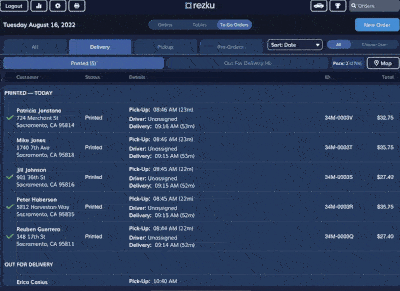
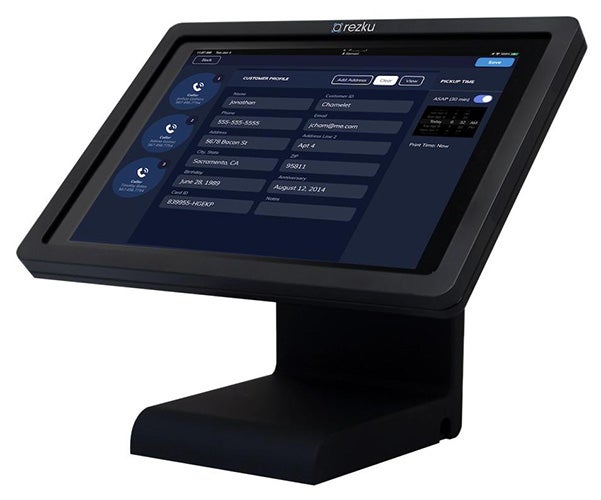
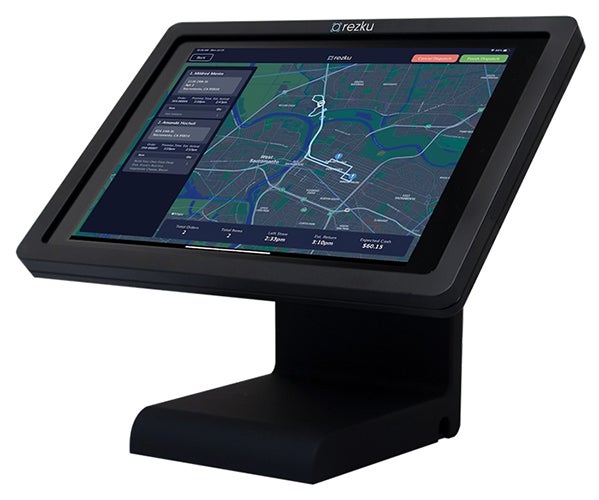

Price & payment processing: 3.75/5
Features:4.81 /5
Backend tools: 4.5 /5
Ease of use:4.38 /5
Expert score: 4.38/5
Square often ranks high among our best-of lists for POS systems. It offers a free basic version that includes online ordering — you only pay for credit card processing. However, in this case, I recommend Square for Restaurants Plus (at $60 per month), which also includes restaurant technology like advanced inventory, scheduling, and KDS software.
This tier also allows you to open closed checks and schedule an unlimited number of team members with Square Shifts. Plus, Square grows with you with features like payroll, banking, and scheduling.
It earned an excellent 4.41 out of 5 on my rubric. The only thing keeping it from maxing the pricing score was that it only offers Square payment processing. Also, one-on-one training starts at $1,399, which is incredibly expensive for those wanting in-depth training on their POS system. Besides that, Square for Restaurants Plus is great for any cloud kitchen operator in need of reliable POS software.
Monthly software fee
Processing fees
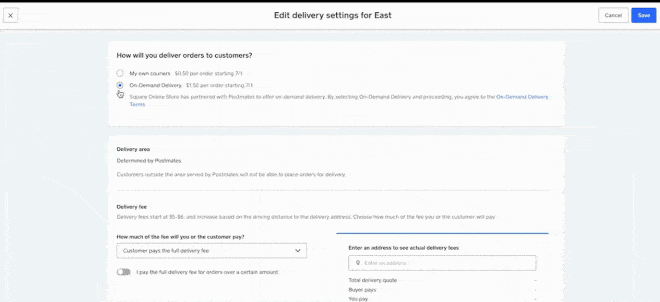
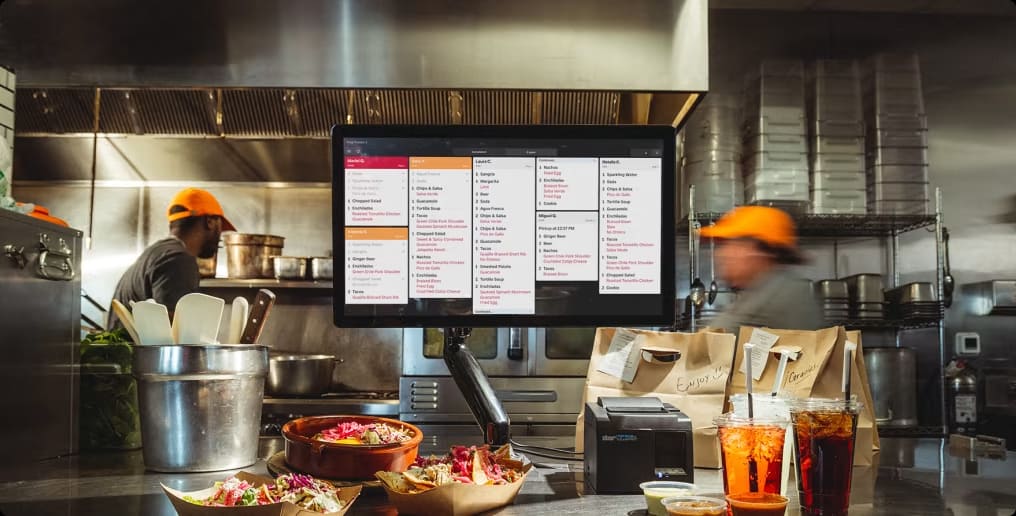

Price & payment processing:4.5 /5
Features: 4.13/5
Backend tools: 4.56/5
Ease of use: 3.75/5
Expert score: 3.44/5
Oracle Simphony is a hardy POS system for restaurants. With the GloriaFood app (also by Oracle), you can manage your online orders from mobile, website, or third-party delivery sources. Simphony stands out, however, for its workplace tools.
Included in all plans are scheduling, onboarding, training, and time-off management tools. Additionally, its KDS works by collecting data from all points of customer and employee contact, allowing for information to be seamlessly relayed to the kitchen staff.
This POS earned 4.13 out of 5 on my rubric. It missed out on points for not offering a free plan and earned excellent scores for its backend tools and online training. The included workforce tools and loyalty program were definite points in its favor.
Plus, at $55 for the most basic program, it’s nicely priced and gives you a choice of payment processors so you can get the best deal. On top of that, it offers cloud-based reporting, which allows you to dig into all of your data, no matter how many different brands or sales channels.
Monthly software fee
Processing fees
Processing fees vary depending on the payment processor you integrate with Oracle.
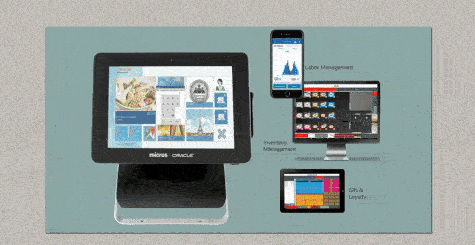
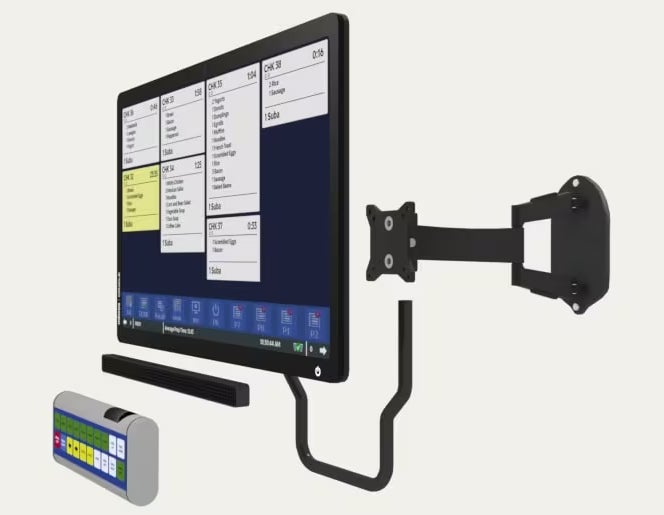
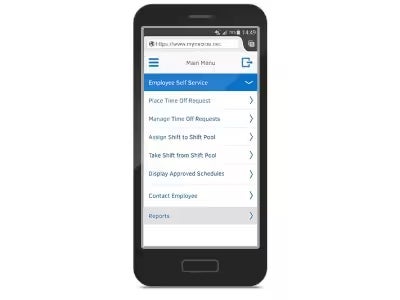

Price & payment processing: 3.63/5
Features: 4.19/5
Backend tools: 3.75/5
Ease of use: 4.06/5
Expert score: 5/5
Poster is the only POS system on my list that includes access to recipes in its kitchen display system. This, along with price, makes it a great choice for new cloud kitchens, but it’s also a good choice if you have high staff turnover or like to change up your menu often.
Menus can include pictures of food, color coordination, and more to help staff who are new to your operation. It also offers a strong app for drivers, which lets you track and monitor statistics and performance for each individual courier that comes into contact with your business.
This POS earned a respectable 4.09 out of 5 on my rubric. It would have earned a much higher score if it had had scheduling tools, an online ordering website (you can get an integration for this), and the ability to easily update menus as you run out of items.
However, it got top marks for training and setup, customer support, reporting, and loyalty. Real-world user reviews give it an astounding 4.8 out of 5 on Capterra.
Monthly software fee
*$19 monthly for a website that will accept payments
Processing fees
Processing fees vary by the payment processor you integrate with Poster.


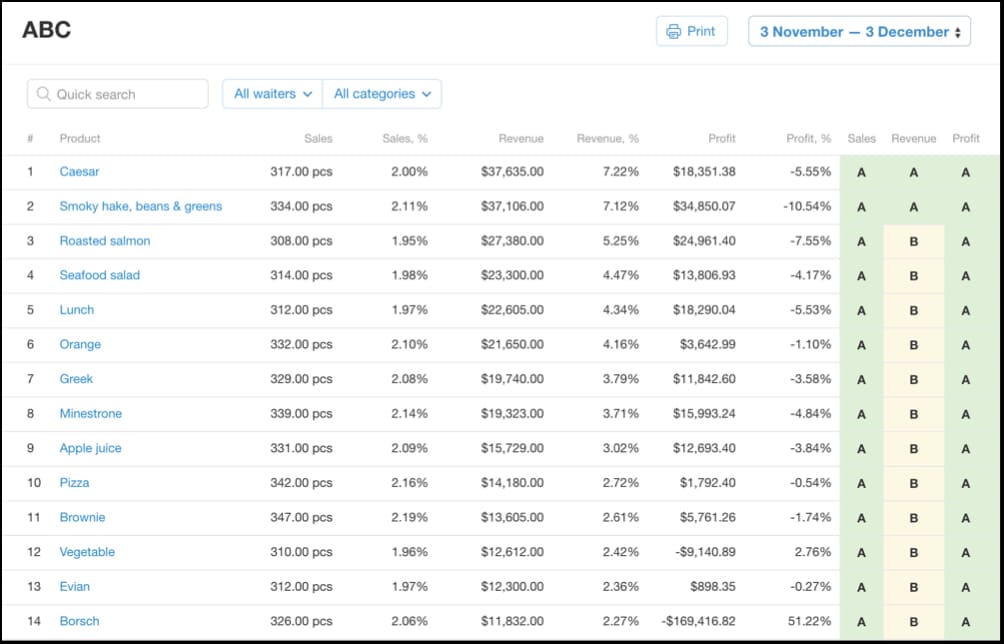

Price & payment processing: 3.94/5
Features: 3.44 /5
Backend tools: 4.06/5
Ease of use: 5/5
Expert score: 4.38/5
Lightspeed is a powerful and popular restaurant POS system that is well known for its ease of use and excellent ingredient-level inventory tracking. Lightspeed also offers robust automated reporting to give you the best insights into your business and what your customers are ordering. This, along with their ability to run on affordable iPads, makes Lightspeed a great choice for cloud kitchens with a lot of moving parts.
Earning 4.04 out of 5 on my list (and a 4.12 out of 5 in our Lightspeed POS review), it also ranked on my ghost kitchen POS list because of its excellent add-on for third-party delivery services. However, the add-on has additional costs, which kept Lightspeed from scoring higher.
It also lost points because it lacks built-in driver management and workforce management tools, which is only truly an option with an add-on Nonetheless, Lightspeed is a solid system that’s easy to use and lets you bring your own your own compatible hardware.
Monthly software fee
Processing fees

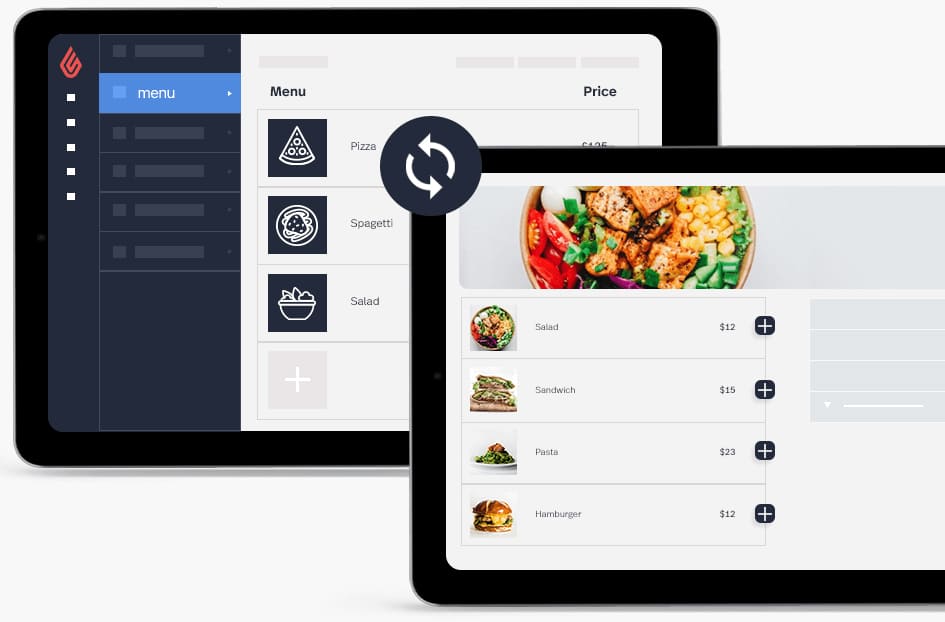
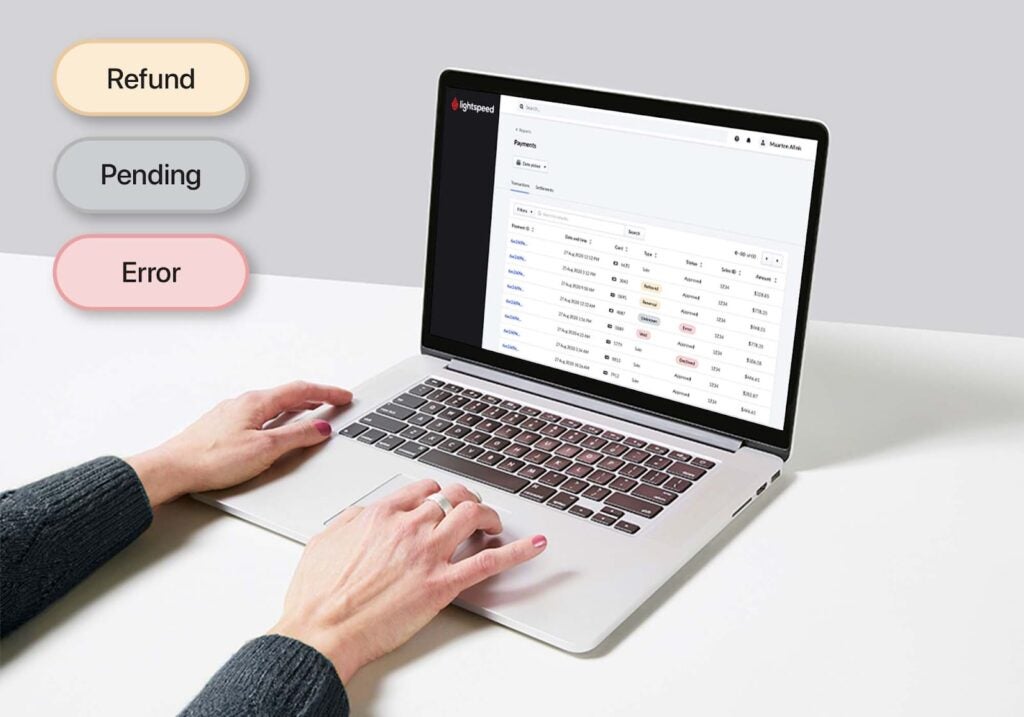

Price & payment processing: 3.56/5
Features: 4.56/5
Backend tools: 2.5/5
Ease of use: 4.38/5
Expert score: 4.38/5
Toast’s ability to aggregate your menu into different ordering platforms is what makes it so easy to use and get your business shown on third-party apps. It also has its own mobile food ordering app, Toast TakeOut. It’s a popular food ordering app highlighting Toast users and is a great way to get instant advertising.
Toast earned a 3.89 out of 5 on my list. Pricing was an issue since the online component requires a more expensive plan, and some of the components I looked for (like scheduling) also cost extra. What it lacks in a cloud kitchen system, it makes up for in traditional POS use cases, earning a spot among the best restaurant POS systems overall.
Additionally, inventory tools and some workforce management tools were an extra cost, whereas other POS systems on this list include these key features in some way. However, if you do go with Toast, remember that the product’s quality is industry-leading, so you’ll get what you pay for.
Monthly software fee
Processing fees

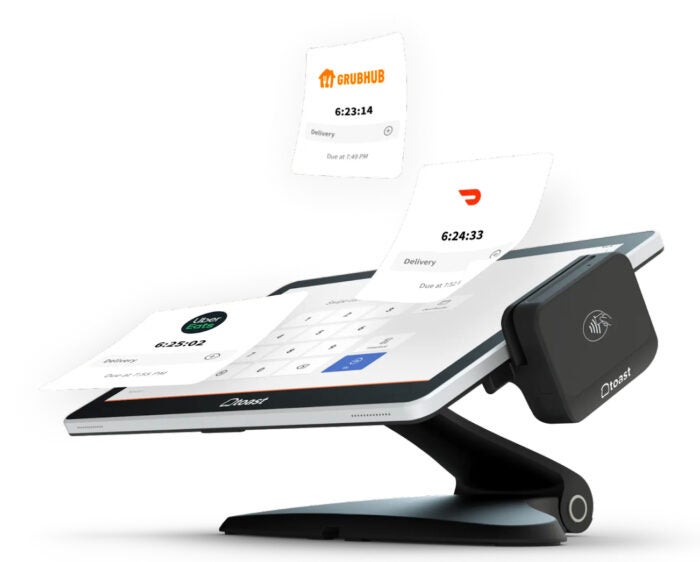
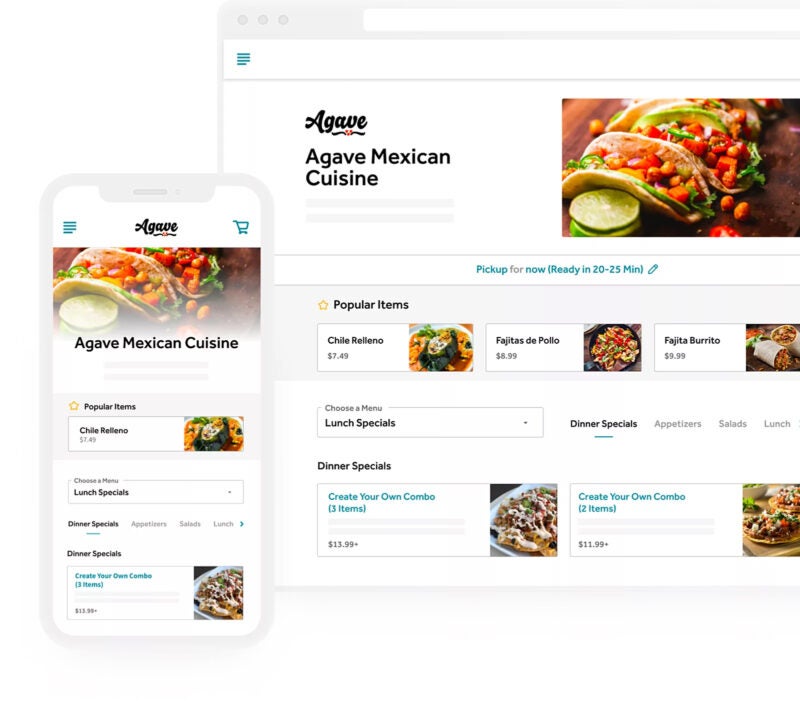
I considered the large selection of POS systems that I normally review and sought out lesser-known systems that specialize in cloud kitchen tools. Then, I narrowed it down for the best in terms of price, delivery options, online and contactless sales tools, and ease of use. I also took into consideration the input of real-world users via third-party review sites.
Rezku ranked No. 1, with 4.56 out of 5. Its ability to manage both drivers, and workforce within a cloud kitchen and tools for growing a customer base consistently set it apart and make it the best for ghost kitchens.
Here, I looked for month-to-month pricing and card processing fees that don’t eat all your profits. I took off points for extra charges for online ordering tools or use limits.
Features refers to delivery tools like integrations, online menus, and delivery management. I also evaluated the kitchen display options (taking points off if it cost extra), and chargeback protection. Square earned 4.81 out of 5, making it the best in this category.
Backend tools make running your ghost kitchen easier: inventory management, scheduling, marketing, reports, and the like. Oracle’s Simphony took the lead with 4.56 out of 5. Several providers lost points because they only included these tools as add-ons or in their more expensive plans.
Onboarding, training, help tools, and customer service hours make up the bulk of this score, but I also considered the ease of 86-ing an item from all the menus of delivery systems you work with. Lightspeed won out in this category with 5 out of 5.
Here, I relied on my years of experience with POS systems and the opinions of real-world users on multiple third-party sites. Rezku and Poster each earned a perfect score, with Square, Lightspeed, and Toast scoring 4.38.
The market for cloud kitchen POS systems is large and can be confusing. That’s why I took the time to look at the market and see what the best systems have to offer. Below is a list of some of the key features you should consider when looking for the best cloud kitchen POS system.
The first step in choosing a POS system is knowing the budget you can afford to spend on one and narrowing your search to that price point. There are many cost-effective and high-performing systems out there, and a lot of them are on this list!
Be sure to consider price while also ensuring you get the features you need out of the system. Additionally, competitive payment processing is key so that you can make the most money out of each customer purchase.
Being able to manage your delivery methods, how you receive and organize your deliveries, and how you get your product to customers are all key to ensuring you run a successful ghost kitchen.
Having tools that let you receive orders and relay them smoothly to your staff is the first major tool a solid system will have. Additionally, the ability to track delivery, let guests know expected delivery times, and monitor drivers is also paramount in being able to manage your cloud kitchen.
All of your planning will go to waste if your customers cannot access your food and order it easily. Having an easy-to-use customer interface that allows them to see your full menu and order with ease should be a key function you require in your POS system search.
Ghost kitchens lack the intimacy of in-person dining, so having a strong virtual brand and ordering site or platform that welcomes and encourages guests to dine with you is paramount to your business’s success.
Workforce management can be a lifesaver, especially when you have a sizable staff to manage. Inventory tracking and live item updates to the menu are also key and will make your life a lot easier.
Finally, a quality system of reporting back your business analytics will allow you to make key changes and pivots that increase the quality of your food service. Having helpful and insightful backend tools is key for any POS system.
Finally, using a reputable and reliable POS company is something you should highly consider. Running into technical issues or having a system fail during busy order times is simply not an option.
Doing research on the needs of your business and how the prospective system you choose addresses those needs is vital to ensuring the system you pick will work for your business. Read consumer reviews, ask for demos and trials, and read over my guide to pick the best cloud kitchen POS for your business.
These are the most common questions I hear about ghost kitchens, cloud kitchens, and their POS needs.
Ghost, dark, and cloud kitchens refer to the same thing, although “CloudKitchens” is also a service that provides kitchen space for rent along with the equipment for managing orders. Dark kitchens are usually small, mobile, self-contained spaces (sort of like a semi-permanent food truck) filled with kitchen appliances and accessories that connect to electrical and water, but they serve the same purpose.
Cloud kitchens work for delivery or takeout only (usually just delivery). Thus, there’s no overhead associated with on-location eating, like floorspace, waitstaff, or public restrooms. This can also be convenient when working for a larger company that franchises its brand. You have more real estate options to choose from, making expansion through mobile dining a positive for your business when done thoughtfully.
The average profit for a restaurant runs from 3% to 5%, while cloud kitchens usually enjoy a profit margin of up to 25% according to unverified sources across the web. Cloud kitchens also have lower startup costs. Ensuring proper systems that work for your restaurant and good marketing that gets your brand out there are key in order to make this profit margin a reality.
In all honesty, it depends on your business model. Delivery services like DoorDash give you a system for tracking orders. Thus, if you are using only a single delivery service or working with a franchise like CloudKitchens, they supply all the equipment you need and coordinate all the delivery services they use for you.
However, if you take your own orders and orders from multiple delivery sites, a POS system will help you coordinate orders, track inventory, prompt for re-orders when supplies are low, and give you internal reports that you can use to audit your accounts with third-party platforms. A POS will also help you track staff hours and ease your payroll processes.
In addition to the items you need to create and pack the meals for delivery, you need a payment processing service, an online store, and a kitchen display system or kitchen printer to keep track of orders. Most of these tools are provided by the POS system you select or the delivery service you work with.
There are two types of third-party platforms that send online orders to POS systems. Direct ordering and delivery platforms are third-party services that provide orders, drivers, and hardware, while middleman apps aggregate orders from multiple direct ordering and delivery platforms and send them to your POS.
Direct integrations with third-party platforms are better because you only pay per order processed. With the middleman apps, you still have to pay the third-party fees, but you also have to pay a monthly subscription fee (which can be pretty expensive).
The market for takeout and delivery food has grown in popularity, and as a result, so have ghost kitchens. Removing the expense of a dining room with its staff, overhead, and upkeep means a greater profit margin. However, working with multiple delivery systems can get complicated. A good cloud kitchen POS software can help coordinate orders, while the best offer you your own online menu and delivery system.
I found Rezku to be the best ghost kitchen POS software. Rezku offers a free-to-use POS platform with extensive driver control and route optimizations. Customer loyalty programs, detailed KDS expansions, and competitive processing rates are also positives that allow for a system that any ghost kitchen operator can succeed with.
Finally, having the ability to integrate with an endless number of third-party tools allows you to spec out your ghost kitchen POS ecosystem to get the most efficiency and create great products.
Ray Delucci is a graduate of The Culinary Institute of America with a Bachelor’s in Food Business Management. He has experience managing restaurants in New York City, Houston, and Chicago. He is also the host of the Line Cook Thoughts Podcast, where he interviews and shares the stories of foodservice workers. Ray currently works in food manufacturing and food product development.
Property of TechnologyAdvice. © 2025 TechnologyAdvice. All Rights Reserved
Advertiser Disclosure: Some of the products that appear on this site are from companies from which TechnologyAdvice receives compensation. This compensation may impact how and where products appear on this site including, for example, the order in which they appear. TechnologyAdvice does not include all companies or all types of products available in the marketplace.